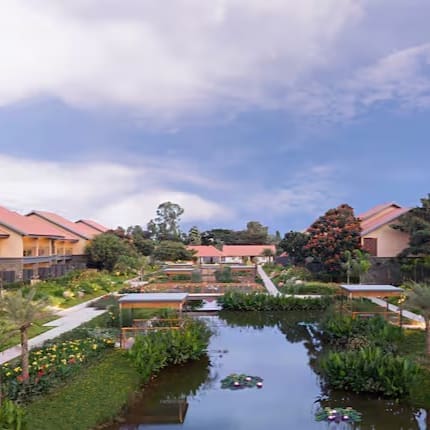The Asia-Pacific region is home to the majority of the world’s population: 59.66%, to be exact. That’s nearly 4.6 billion people! It’s a sizable market with many opportunities for savvy hospitality marketers.

The region is home to many cultures and mindsets; each country has its own preferences and approaches. The three largest countries – China, India, Indonesia – are each quite unique in their economics, outlooks, and behaviors.
As Satria Pinandhita, Cendyn’s Regional Director for APAC, emphasizes, the region has a vibrant variety of cultures and languages reachable within only a few hours’ flight:
“Asia is quite unique. Let’s say I live in Singapore, and then fly an hour away – I’m in a completely different country. There’s a different culture and language. And then you fly again and there are yet more different cultures. It depends on each country.”
For hospitality marketers, these micro-nuances carry great weight. Without a clear understanding of these variations, marketing falls flat and underperforms. At a macro-level, there are also some key trends that influence a marketer’s approach. Here are ten of the most salient hospitality trends to look for when serving the Asian market.
#1: Mobile bookings over-index when compared elsewhere
One of the benefits of a region where mobile phones have leapfrogged desktops is the prominence of mobile bookings. A recent free report from Phocuswright highlights the strong performance of the mobile channel among Asian travelers. In just two years, mobile’s share of bookings in the region exploded from 44% in 2017 to a projected 55% in 2019, per Phocuswright.
When it comes to marketing and retailing on mobile devices, travel brands benefit from a clear, cohesive strategy. Reaching true multi-channel attribution isn’t easy, so it’s up to the right technology to accurately track across the entire traveler journey.
With that information, marketing can be personalized at each stage in the journey, which will improve conversion rates — and ultimately lower customer acquisition costs. In a region where mobile dominates inspiration, search, booking, in-destination, and post-trip, attribution is essential!
#2: Millennials entering peak earning years
As millennials enter their peak earning years, the generation is a force in travel (just like elsewhere in the world). In the West, the media often characterizes millennial behavior as part of a discrete demographic that shares more similarities than differences. In Asia, where millennials make up 25% of the workforce, the rising purchasing power of this generation is affecting travel at all levels.
As such, there are some unique considerations for hoteliers looking to market to this generation.
- Due to cultural norms, many millennials live at home. A 2016 CBRE survey estimates that nearly ⅔ live at home with family. In some cases, millennials may be looking for short break away from family; in others, they may prefer a destination that appeals across generations.
- Asian travelers are especially motivated by expert status. In a 2019 Hilton survey of 2,300 travelers across 11 Asian countries, a surprising 75% “aspire to be an ‘expert’ within their social circle and the first to discover new locations.”
- Alongside Gen Z, millennials communicate mostly via smartphones and messaging apps. Email is only for work and purchases where you need an email address. Since they don’t see email as a daily communications tool, email marketing can be a challenge. See the next point!
#3: Multi-channel messaging matters most
If there’s one thing that unites travelers in this region, it’s the desire for seamless multi-channel messaging. For these travelers, email and text messages are often not the preferred ways to communicate. Ignoring this fact may lead to an uneven communication experience between your brand and its customers.
Like most modern travelers, those in Asia communicate primarily via the smartphone. However, the preferred channels are different. For instance, in China, everything is done via messaging apps, such as WeChat, says Pinandhita:
“Whether it’s uploading pictures, or booking restaurants, it’s all within that single super app. It’s a combination of Instagram, Facebook, and WhatsApp all in one. When they go out with friends, they make payments through the app as well. This means that there’s far less email…in fact, some consumers only have email to manage reservations while they travel abroad!”
Don’t neglect a strategy that connects with guests across all channels, so that you’re able to engage and serve them wherever they prefer.
#4: Bring on the data-driven personalization
The personalization preferences of the Asian traveler tend towards “more is better.” Many travelers are more comfortable with data sharing, given their frequent sharing on social media says Pinandhita:
“Data sharing is seen as acceptable, so travelers here are less hesitant when it comes to personalization. We embrace it. We try to share as much as we can on social media. Hotels can use shared data to target and personalize ads to each guest segment. Personalization is welcomed (and somewhat expected) because the data is already there.”
With a cross-sectional view across a hotel’s various tech tools, data-driven personalization can positively impact conversions and gross revenues. Better results come from connecting disparate data sources into a single digital marketing suite.
To build that holistic view of the customer, hoteliers must first identify the tools necessary to answer one key question, says Marcos Cadena, VP of Digital, eCommerce and Distribution, Minor Hotels:
“How do we use the data we have to make that experience beyond what they have experienced before in every one of the touchpoints they have with our staff?”
Once that question is answered, results will follow: within the first four months of uniting around a single CRM, Minor Hotels saw a 50% increase in subscriptions, higher clickthrough rates, and double the revenue. Personalization makes a big difference, especially in Asia!
#5: China is somewhat of an outlier
As the largest population in the region (and the world), China stands apart from other countries in the region. In fact, as Pinandhita has discovered first hand, “many hotels actually hire people to speak Chinese to serve and assist these tourists.”
Beyond improving the guest experience for Chinese travelers, there’s another benefit: these employees are ideally positioned to learn more about how to use the tech preferred by China. Listening to customers is easier when you can speak their language, after all.
There are a few key points to remember when targeting Chinese travelers:
- Group travel remains popular. Many Chinese travelers travel in large groups with a group leader. Traveling in this way creates opportunities for hoteliers looking to drive their group sales but also offers the opportunity to diversify the experiences available at and around their hotel for these groups.
- Mobile bookings are the vast majority. According to Phocuswright, mobile will account for 80% of China’s online travel bookings in 2019. If your hotel has a poor mobile experience, it may affect your bookings.
- Increase expectations of digital payment options. A recent Nielsen survey found that 69% of Chinese travelers made purchases using mobile phones during overseas trips in 2018. Consider supporting AliPay and WePay if your property attracts many inbound guests from China.
#6: Reconsider loyalty, as OTAs capture massive mindshare
Loyalty is a major component of building a healthier direct booking business, as it both reduces commission costs and reduces losses due to unprofitable marketing investments. And, since intra-regional travel accounted for 80% of the region’s total tourist arrivals (or 257 million people), there’s plenty of opportunity to boost loyalty in a bid to drive direct bookings.
For an impactful regional-first approach to loyalty, hoteliers must understand what they’re up against: according to Criteo, 17% of Asian travelers have an OTA loyalty membership, which is more than double the 8% seen in the U.S. Hotels must take advantage of this opportunity with a considered approach to fostering loyalty.
To reduce your reliance on OTAs, focus on boosting your direct bookings through stronger merchandising, better targeting of offers, and added incentives to book on your hotel’s website. Capture data at every touchpoint so that you can better personalize offers and improve marketing over time. Don’t take loyalty for granted!
#7: Price isn’t everything
Following on from the above point about the continued strength of online travel agencies, it’s important to remember that this isn’t a race to the bottom. Hotels shouldn’t compete for the lowest rate, as many OTAs already undercut hotel rates by double digits. As more travelers board planes and trains away from their home countries, the focus has expanded beyond just price.
Travelers are now focusing on wellness and authentic experiences. Whether it’s puppy tea time in Hong Kong, artist takeovers in Bangkok, or golfing in Danang, Asian travelers are just as likely to seek experiences worth sharing with friends and online networks.
Don’t compete only on price — deliver a more memorable and shareable experience. Then you’ll be on stronger footing to compete for direct bookings by building loyalty and a stellar reputation.
#8: In-room technology differences
The expectations of Asian travelers are unsurprisingly related to better integration of their smartphones. When Hilton asked travelers how technology could improve the hotel experience,
“More than half of APAC travelers feel that technology can be adopted to speed up check-in and manage their whole trip better. Young families are more likely to see the benefit of tech being used by updating them with push alerts (48%), offering inspiration on destinations (49%), and delivering tailored in-room entertainment (40%). “
Guests also expect to be able to stream content on their personal devices, preferring control over in-room cable television. This allows guests to consume content in their native language. For many travelers, this desire can prove problematic: data usage fees can be astronomical in other countries.
Many hotels are turning to companies that provide phones to guests for them to use (free of charge) during their stay. They provide in-destination tips and access to hotel services, such as room service.
For hotels, this means careful consideration of your guests’ in-destination (and in-room technology) needs. Whether it’s facilitating Bring Your Own Device for personal streaming or providing smartphones, know your guests well and give them what they expect during their stay.
#9: Tackle fragmentation and develop channel (and country) specific content
Fragmentation is a real struggle. With so many platforms, messaging apps, and other channels to communicate with guests, hoteliers face an uphill battle to maintain relevance.
While it’s certainly overwhelming to consider creating content for specific channels (and countries), it’s high-value to connect with potential guests wherever they hang out. Start with your most common countries-of-origin, then dive into the channels they use most to define a channel strategy that puts your content in the right place at the right time.
For smaller hotels without the resources to dedicate to an ongoing experience, consider partnering with your local DMO to co-create content. This has worked well for Visit Portugal’s WeChat, and may be a path to connect with potential guests without having to invest fully in a channel-specific presence.
#10: Consider visa rules when planning your marketing
Each country has its own tourist visa requirements. Business travelers can access the APEC business travel card, which allows short-term visitation for business purposes in cooperating countries. When planning your marketing campaigns, tune into the nearby markets that have the most flexible visa rules, says Pinandhita:
“If you want to do a campaign, you need to plan in advance on which segments you’ll target. You need to know which campaigns will work BUT travelers have to be able to travel. It all depends on where your hotel is and who you target. Keep visas in mind when building out marketing campaigns!”
Key takeaways
The Asia region is a vibrant tapestry of social mores, travel preferences, and cultural expectations. To fully leverage the combined power of Marketing, Revenue and Operations, we suggest you do these three things:
- Unite your communications and relationship management tools into one interface. That way, you can provide the best experience for every guest.
- Support your guests with communications across any channels that they prefer. This allows customization of the messaging, giving you a deeper understanding of the guest so you can better serve guests from a variety of countries.
- Localize your marketing. Dive into your guest profiles and stay data to identify patterns and preferences for specific segments. Then localize your marketing so that you more accurately target the message. This will not only improve conversions but also build rapport and trust with past and future guests.
With these three steps, you’ll be on track to boost business and increase satisfaction from Asian travelers.

















